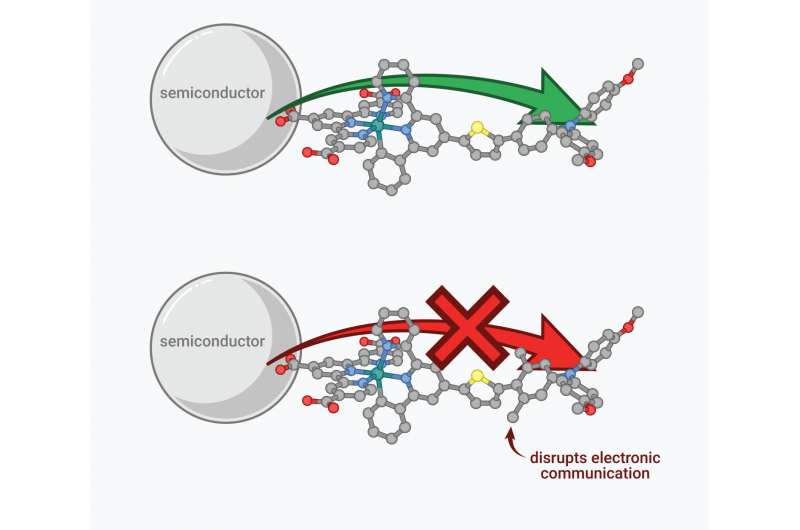Researchers find better way to 'herd' electrons in solar fuel devices

Researchers at the University of British Columbia and the University of North Carolina at Chapel Hill have discovered a new way to optimize electron transfer in semi-conductors used in solar fuel solutions.
The finding, published today in Nature Chemistry, could have a big impact on devices that convert sunlight into electricity and fuel.
Researchers have already shown that the efficiency of electron transfer at semi-conductor interfaces depends on the distance the electron has to travel. The new finding shows that the efficiency of the transfer also depends on the type of chemical bonds—or the bridge—that the electron travels through along the way.
"Now we can design molecules to act as a gate and keep electrons moving forward in one direction and not reverse their direction," says UBC chemist and chemical engineer Curtis Berlinguette, senior author on the paper.
"If electrons go in the wrong direction, we lose much of the sun's energy as heat before it can be converted into electricity or fuel."
The research also has ramifications in how we view electron transfer in biological systems.
More information: Nature Chemistry, DOI: 10.1038/nchem.2549
Journal information: Nature Chemistry
Provided by University of British Columbia




















